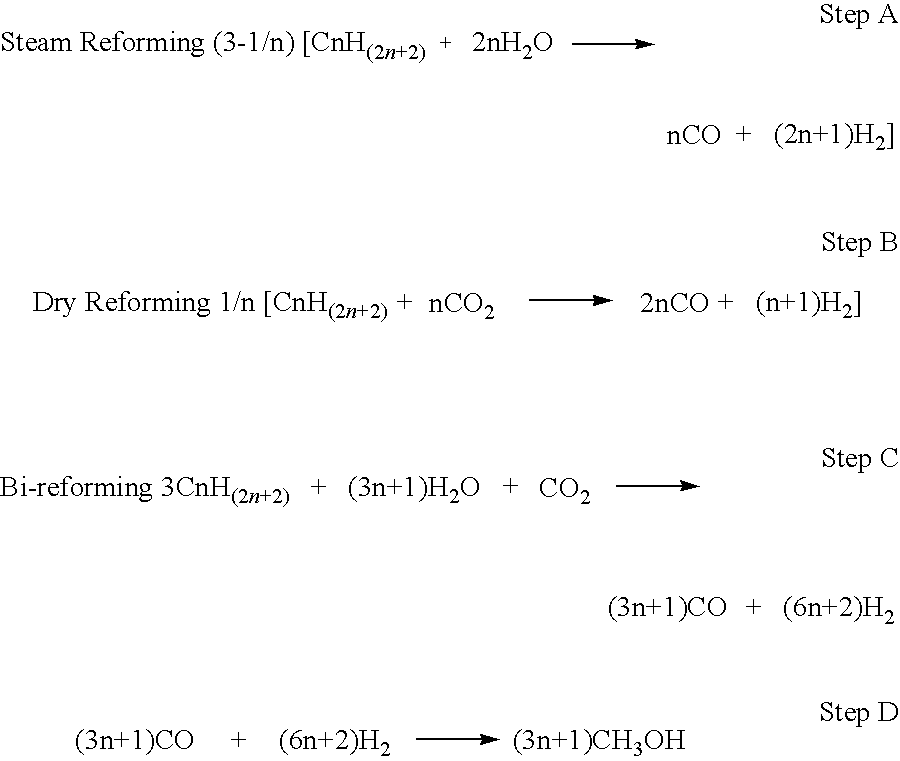Efficient and environmentally friendly processing of heavy oils to methanol and derived products
a technology of methanol and derived products, which is applied in the direction of fuels, organic chemistry, bulk chemical production, etc., can solve the problems of high energy consumption, high cost, and high cost of usual processing of heavy oils derived from unconventional sources such as tar sands, shale oils, etc., and achieve efficient and economical new ways of methanol, reduce the viscosity, and good api index
- Summary
- Abstract
- Description
- Claims
- Application Information
AI Technical Summary
Benefits of technology
Problems solved by technology
Method used
Image
Examples
example 1
[0026]Utilization of any heavy crude oils recovered from varied sources, such as tar sands, shale oils, heavy residues via thermal or catalytic break down of their extremely heavy asphaltenes or maltenes residues with simultaneous removal of sulfur and metal impurities for their conversion to methanol or dimethyl ether by passing conventional refining using the bi-reforming process for reacting heavy hydrocarbon oils with water and carbon dioxide.
example 2
[0027]Purified heavy crude oils produced from any source are subjected to the bi-reforming process in a flow reactor over a catalyst such as NiO at a temperature of about 800° C. to 1100° C. preferentially between 800-850° C. Catalysts include varied metal and metal oxides such as V, Ti, Ga, Mg, Cu, Ni, Mo, Bi, Fe, Mn, Co, Nb, Zr, or Sn used as single metal, metal oxides or their combination. They can be supported on suitable support, preferentially suitably large nanostructured surface such as fumed silica or aluminum. A preferred catalyst is NiO on fused alumina support. The processing provides a mixture of CO and H2.
example 3
[0028]Adjusting the mixture obtained in Example 2 to give CO and H2 composition of 2:1 mole ratio suitable for the production of methanol.
PUM
| Property | Measurement | Unit |
|---|---|---|
| temperature | aaaaa | aaaaa |
| temperature | aaaaa | aaaaa |
| temperature | aaaaa | aaaaa |
Abstract
Description
Claims
Application Information
 Login to View More
Login to View More - R&D
- Intellectual Property
- Life Sciences
- Materials
- Tech Scout
- Unparalleled Data Quality
- Higher Quality Content
- 60% Fewer Hallucinations
Browse by: Latest US Patents, China's latest patents, Technical Efficacy Thesaurus, Application Domain, Technology Topic, Popular Technical Reports.
© 2025 PatSnap. All rights reserved.Legal|Privacy policy|Modern Slavery Act Transparency Statement|Sitemap|About US| Contact US: help@patsnap.com

